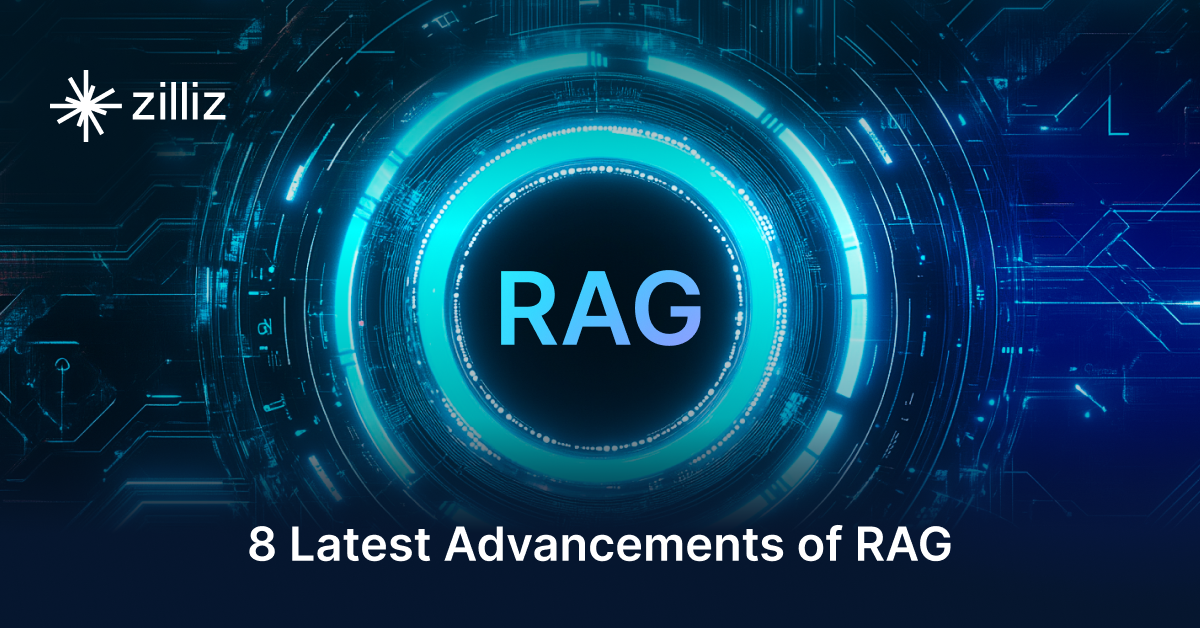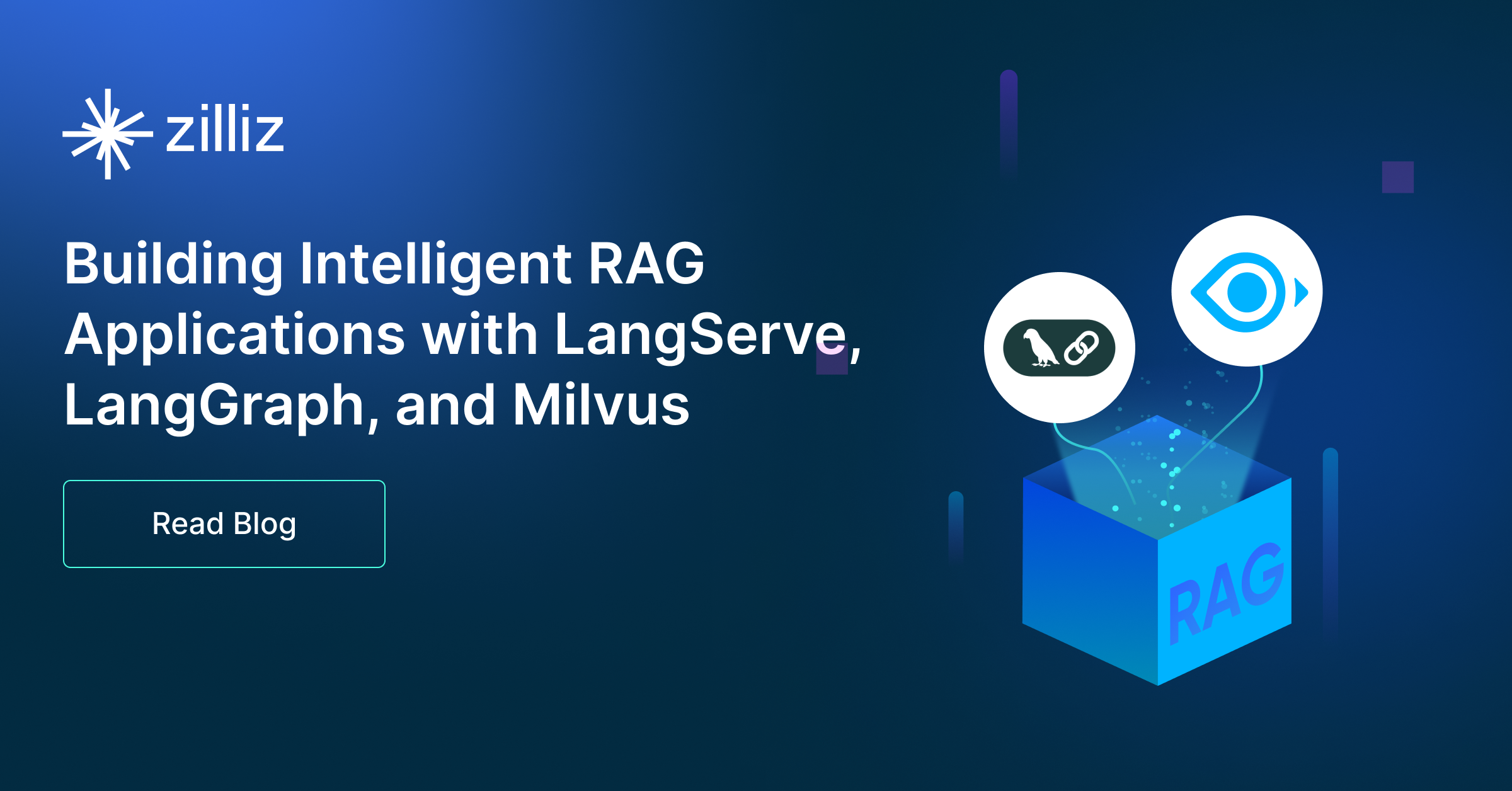Build RAG Chatbot with LangChain, LangChain vector store, AWS Bedrock Claude 3.5 Sonnet, and Cohere embed-multilingual-light-v3.0
Introduction to RAG
Retrieval-Augmented Generation (RAG) is a game-changer for GenAI applications, especially in conversational AI. It combines the power of pre-trained large language models (LLMs) like OpenAI’s GPT with external knowledge sources stored in vector databases such as Milvus and Zilliz Cloud, allowing for more accurate, contextually relevant, and up-to-date response generation. A RAG pipeline usually consists of four basic components: a vector database, an embedding model, an LLM, and a framework.
Key Components We'll Use for This RAG Chatbot
This tutorial shows you how to build a simple RAG chatbot in Python using the following components:
- LangChain: An open-source framework that helps you orchestrate the interaction between LLMs, vector stores, embedding models, etc, making it easier to integrate a RAG pipeline.
- LangChain in-memory vector store: an in-memory, ephemeral vector store that stores embeddings in-memory and does an exact, linear search for the most similar embeddings. The default similarity metric is cosine similarity, but can be changed to any of the similarity metrics supported by ml-distance. It is intended for demos and does not yet support ids or deletion. (If you want a much more scalable solution for your apps or even enterprise projects, we recommend using Zilliz Cloud, which is a fully managed vector database service built on the open-source Milvusand offers a free tier supporting up to 1 million vectors.)
- AWS Bedrock Claude 3.5 Sonnet: This model combines the advanced language processing abilities of Claude 3.5 with AWS's scalable infrastructure, offering enhanced performance for complex text generation tasks. Its strengths lie in versatility and resilience, making it ideal for applications in creative writing, customer support automation, and interactive content generation.
- Cohere embed-multilingual-light-v3.0: This model is designed for efficient multilingual text embedding, enabling robust semantic search and similarity tasks across various languages. It excels in scenarios requiring rapid comprehension and matching of diverse linguistic datasets, making it ideal for global applications in content recommendation, categorization, and cross-language information retrieval.
By the end of this tutorial, you’ll have a functional chatbot capable of answering questions based on a custom knowledge base.
Note: Since we may use proprietary models in our tutorials, make sure you have the required API key beforehand.
Step 1: Install and Set Up LangChain
%pip install --quiet --upgrade langchain-text-splitters langchain-community langgraph
Step 2: Install and Set Up AWS Bedrock Claude 3.5 Sonnet
pip install -qU "langchain[aws]"
# Ensure your AWS credentials are configured
from langchain.chat_models import init_chat_model
llm = init_chat_model("anthropic.claude-3-5-sonnet-20241022-v2:0", model_provider="bedrock_converse")
Step 3: Install and Set Up Cohere embed-multilingual-light-v3.0
pip install -qU langchain-cohere
import getpass
import os
if not os.environ.get("COHERE_API_KEY"):
os.environ["COHERE_API_KEY"] = getpass.getpass("Enter API key for Cohere: ")
from langchain_cohere import CohereEmbeddings
embeddings = CohereEmbeddings(model="embed-multilingual-light-v3.0")
Step 4: Install and Set Up LangChain vector store
pip install -qU langchain-core
from langchain_core.vectorstores import InMemoryVectorStore
vector_store = InMemoryVectorStore(embeddings)
Step 5: Build a RAG Chatbot
Now that you’ve set up all components, let’s start to build a simple chatbot. We’ll use the Milvus introduction doc as a private knowledge base. You can replace it with your own dataset to customize your RAG chatbot.
import bs4
from langchain import hub
from langchain_community.document_loaders import WebBaseLoader
from langchain_core.documents import Document
from langchain_text_splitters import RecursiveCharacterTextSplitter
from langgraph.graph import START, StateGraph
from typing_extensions import List, TypedDict
# Load and chunk contents of the blog
loader = WebBaseLoader(
web_paths=("https://milvus.io/docs/overview.md",),
bs_kwargs=dict(
parse_only=bs4.SoupStrainer(
class_=("doc-style doc-post-content")
)
),
)
docs = loader.load()
text_splitter = RecursiveCharacterTextSplitter(chunk_size=1000, chunk_overlap=200)
all_splits = text_splitter.split_documents(docs)
# Index chunks
_ = vector_store.add_documents(documents=all_splits)
# Define prompt for question-answering
prompt = hub.pull("rlm/rag-prompt")
# Define state for application
class State(TypedDict):
question: str
context: List[Document]
answer: str
# Define application steps
def retrieve(state: State):
retrieved_docs = vector_store.similarity_search(state["question"])
return {"context": retrieved_docs}
def generate(state: State):
docs_content = "\n\n".join(doc.page_content for doc in state["context"])
messages = prompt.invoke({"question": state["question"], "context": docs_content})
response = llm.invoke(messages)
return {"answer": response.content}
# Compile application and test
graph_builder = StateGraph(State).add_sequence([retrieve, generate])
graph_builder.add_edge(START, "retrieve")
graph = graph_builder.compile()
Test the Chatbot
Yeah! You've built your own chatbot. Let's ask the chatbot a question.
response = graph.invoke({"question": "What data types does Milvus support?"})
print(response["answer"])
Example Output
Milvus supports various data types including sparse vectors, binary vectors, JSON, and arrays. Additionally, it handles common numerical and character types, making it versatile for different data modeling needs. This allows users to manage unstructured or multi-modal data efficiently.
Optimization Tips
As you build your RAG system, optimization is key to ensuring peak performance and efficiency. While setting up the components is an essential first step, fine-tuning each one will help you create a solution that works even better and scales seamlessly. In this section, we’ll share some practical tips for optimizing all these components, giving you the edge to build smarter, faster, and more responsive RAG applications.
LangChain optimization tips
To optimize LangChain, focus on minimizing redundant operations in your workflow by structuring your chains and agents efficiently. Use caching to avoid repeated computations, speeding up your system, and experiment with modular design to ensure that components like models or databases can be easily swapped out. This will provide both flexibility and efficiency, allowing you to quickly scale your system without unnecessary delays or complications.
LangChain in-memory vector store optimization tips
LangChain in-memory vector store is just an ephemeral vector store that stores embeddings in-memory and does an exact, linear search for the most similar embeddings. It has very limited features and is only intended for demos. If you plan to build a functional or even production-level solution, we recommend using Zilliz Cloud, which is a fully managed vector database service built on the open-source Milvus and offers a free tier supporting up to 1 million vectors.)
AWS Bedrock Claude 3.5 Sonnet optimization tips
Claude 3.5 Sonnet in AWS Bedrock delivers an improved balance of efficiency and reasoning. Optimize retrieval by incorporating reranking techniques that prioritize the most contextually relevant documents. Keep prompts structured and avoid unnecessary details to prevent context window saturation. Use temperature values between 0.1 and 0.3 for factual responses, fine-tuning top-p and top-k as needed. Cache frequently accessed data to reduce redundant API calls and lower operational costs. Leverage AWS Bedrock’s elastic scaling to handle demand spikes while maintaining performance. If used with Claude 3.5 Opus, delegate more complex reasoning tasks to Opus while Sonnet handles general-purpose queries.
Cohere embed-multilingual-light-v3.0 optimization tips
Cohere embed-multilingual-light-v3.0 is optimized for faster and more efficient multilingual embeddings. Reduce input data size by filtering out non-essential elements and focusing on key phrases or terms that provide the most value in cross-lingual search scenarios. Implement approximate nearest neighbor search methods, such as FAISS, to ensure that retrieval remains fast and accurate even in large datasets. Use vector compression techniques to save on storage space while maintaining retrieval quality. Employ caching strategies to store commonly used embeddings and reduce unnecessary recomputation. Optimize search performance by organizing embeddings into a hierarchical structure based on languages or topics, enabling quicker retrieval from specific language groups.
By implementing these tips across your components, you'll be able to enhance the performance and functionality of your RAG system, ensuring it’s optimized for both speed and accuracy. Keep testing, iterating, and refining your setup to stay ahead in the ever-evolving world of AI development.
RAG Cost Calculator: A Free Tool to Calculate Your Cost in Seconds
Estimating the cost of a Retrieval-Augmented Generation (RAG) pipeline involves analyzing expenses across vector storage, compute resources, and API usage. Key cost drivers include vector database queries, embedding generation, and LLM inference.
RAG Cost Calculator is a free tool that quickly estimates the cost of building a RAG pipeline, including chunking, embedding, vector storage/search, and LLM generation. It also helps you identify cost-saving opportunities and achieve up to 10x cost reduction on vector databases with the serverless option.
 Calculate your RAG cost
Calculate your RAG cost
What Have You Learned?
What Have You Learned?
Wow, what an incredible journey we’ve been on together in this tutorial! You’ve not only grasped the individual components—like the powerful LangChain framework that connects everything seamlessly, the lightning-fast vector database for efficient searches, the intuitive LLM that brings conversational intelligence to life, and the embedding model that generates those rich, meaningful representations—but you’ve learned how to integrate them into a cutting-edge RAG (Retrieval-Augmented Generation) system that can genuinely transform your applications.
Each piece plays a pivotal role: the LangChain ties everything together, making it easy to manage your workflows; the vector database empowers you with fast and accurate search capabilities, ensuring you can retrieve relevant information in the blink of an eye; the LLM, such as AWS Bedrock's Claude 3.5 Sonnet, engages users in delightful and contextually rich conversations; and the Cohere embedding model fine-tunes your data into something that is not just searchable but truly understandable.
And let's not forget those stellar optimization tips and the handy cost calculator we discussed, designed to help you refine your systems for maximum efficiency and cost-effectiveness. Now, it’s your turn! The tools are at your fingertips—start building, optimizing, and innovating your own RAG applications. The possibilities are endless, and we can’t wait to see where your creativity takes you. Dive into this exciting realm, and remember: every great innovation starts with a single step. Get out there, experiment, and let your ideas shine!
Further Resources
🌟 In addition to this RAG tutorial, unleash your full potential with these incredible resources to level up your RAG skills.
- How to Build a Multimodal RAG | Documentation
- How to Enhance the Performance of Your RAG Pipeline
- Graph RAG with Milvus | Documentation
- How to Evaluate RAG Applications - Zilliz Learn
- Generative AI Resource Hub | Zilliz
We'd Love to Hear What You Think!
We’d love to hear your thoughts! 🌟 Leave your questions or comments below or join our vibrant Milvus Discord community to share your experiences, ask questions, or connect with thousands of AI enthusiasts. Your journey matters to us!
If you like this tutorial, show your support by giving our Milvus GitHub repo a star ⭐—it means the world to us and inspires us to keep creating! 💖
- Introduction to RAG
- Key Components We'll Use for This RAG Chatbot
- Step 1: Install and Set Up LangChain
- Step 2: Install and Set Up AWS Bedrock Claude 3.5 Sonnet
- Step 3: Install and Set Up Cohere embed-multilingual-light-v3.0
- Step 4: Install and Set Up LangChain vector store
- Step 5: Build a RAG Chatbot
- Optimization Tips
- RAG Cost Calculator: A Free Tool to Calculate Your Cost in Seconds
- What Have You Learned?
- Further Resources
- We'd Love to Hear What You Think!
Content
Vector Database at Scale
Zilliz Cloud is a fully-managed vector database built for scale, perfect for your RAG apps.
Try Zilliz Cloud for Free


